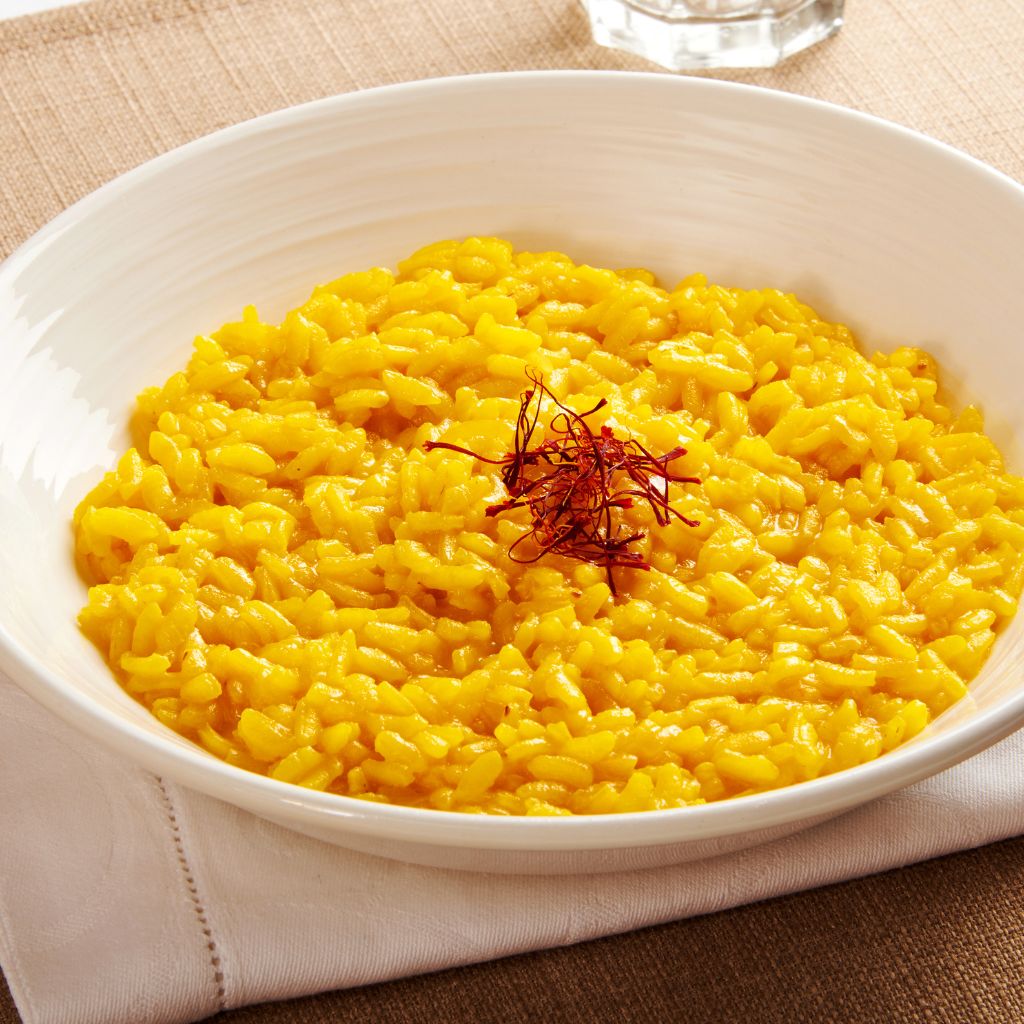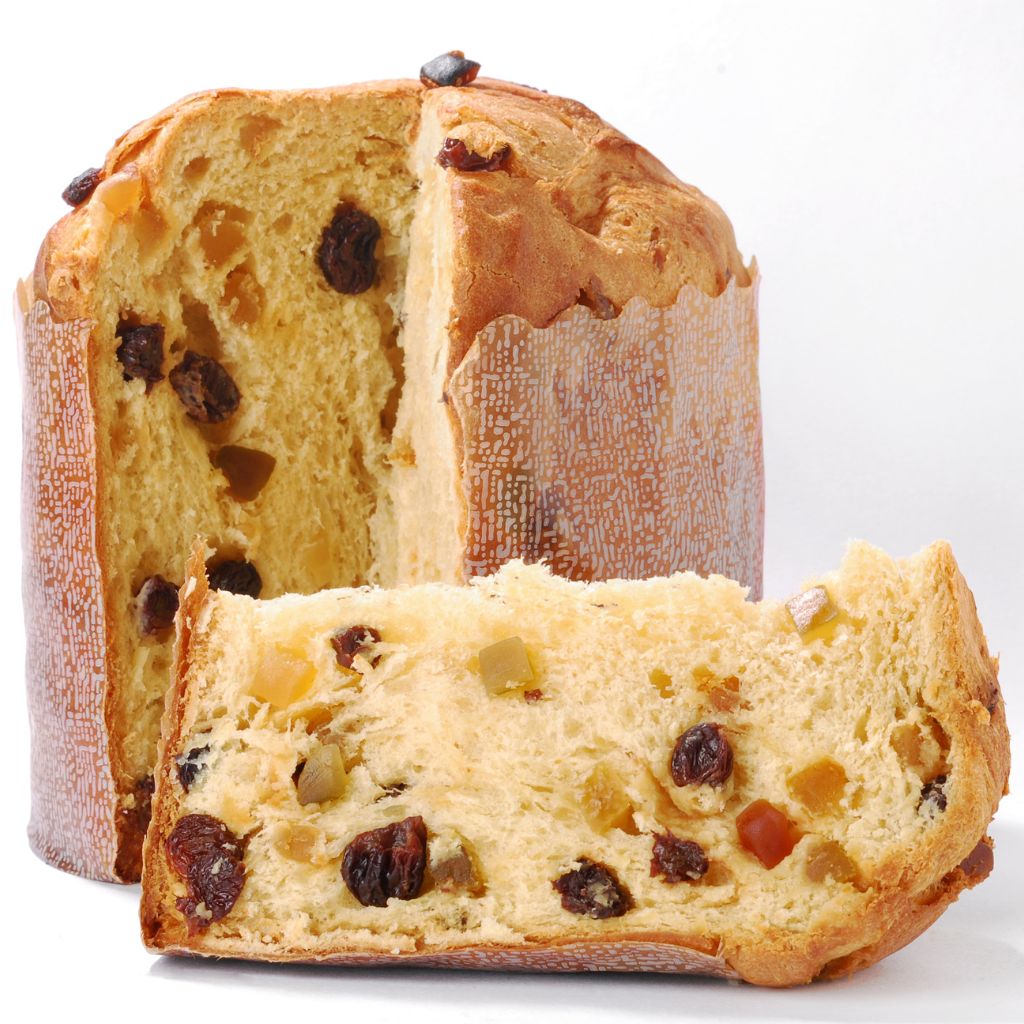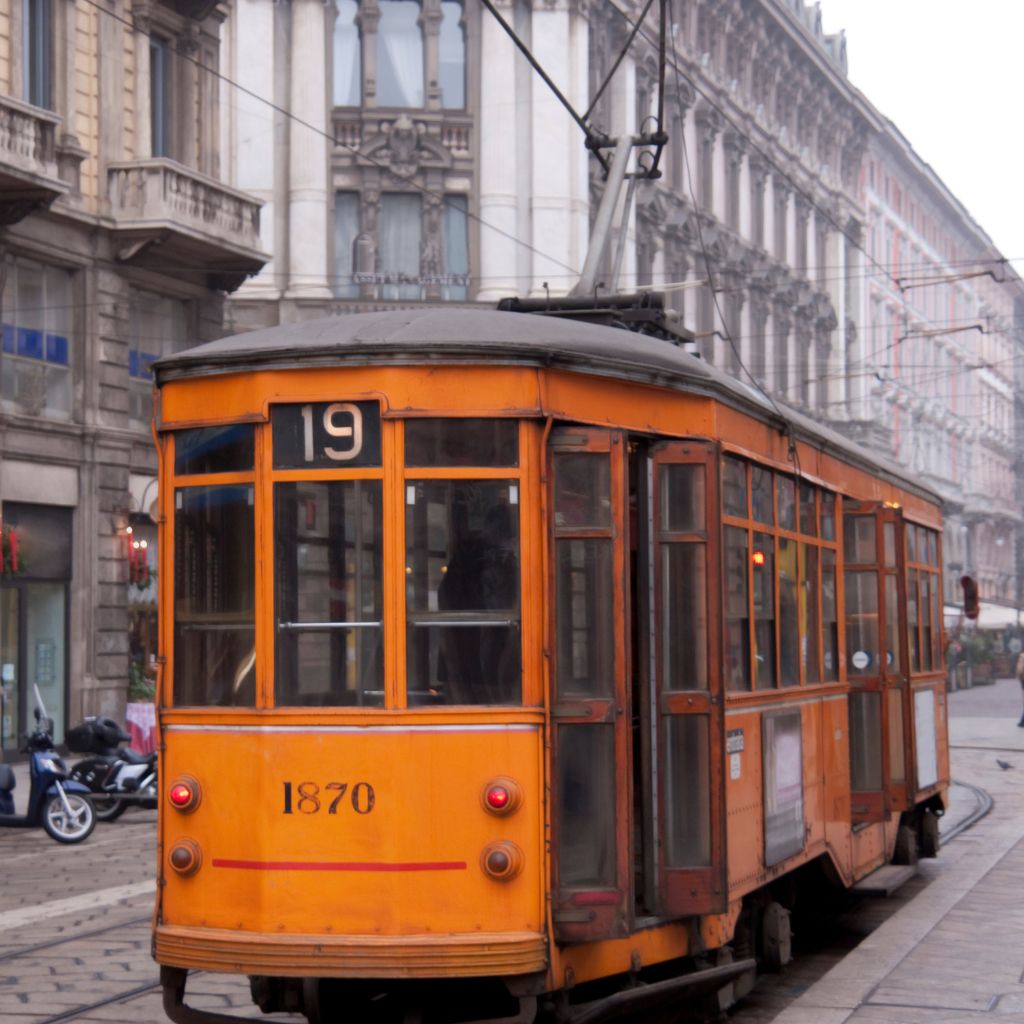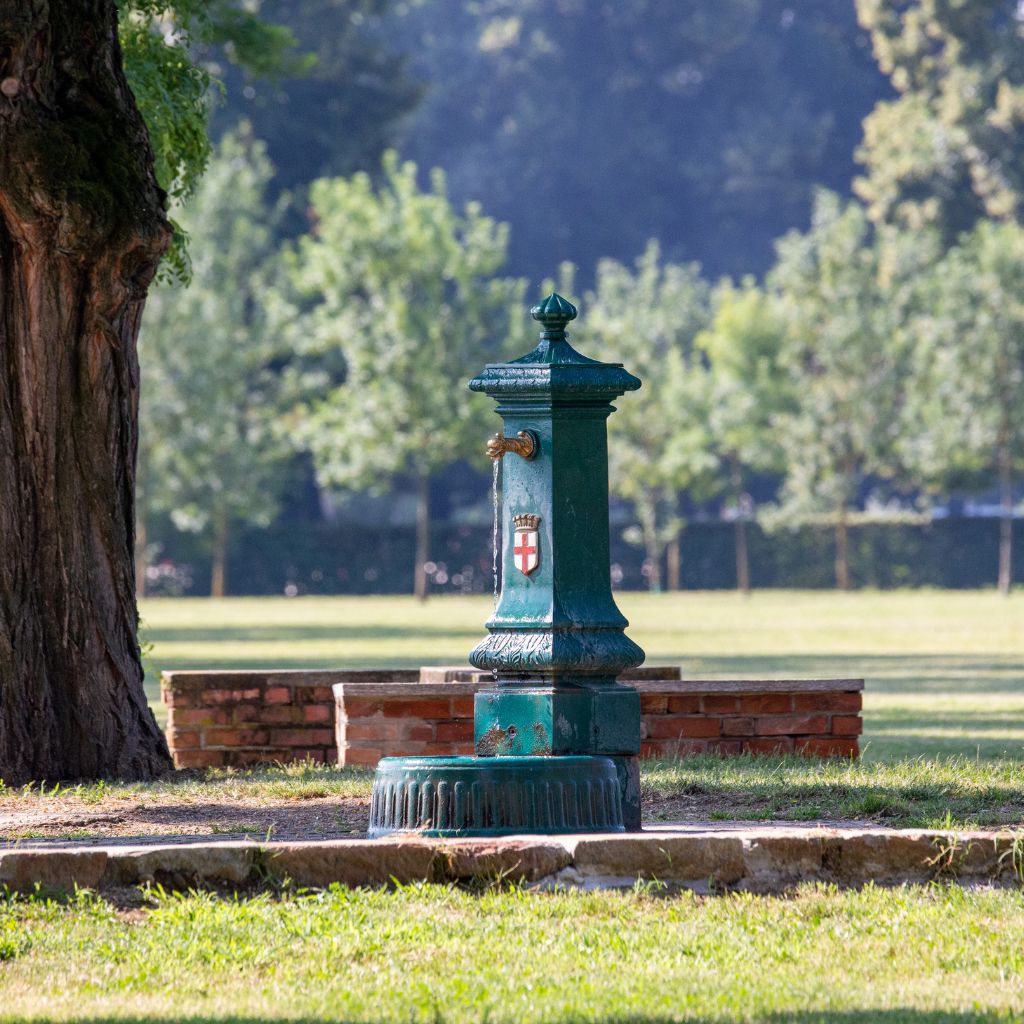Risotto alla milanese
The origins of Risotto alla Milanese trace back to the year 1574, involving a Belgian glassmaker named Valerio di Fiandra and his assistant in Milan. During the wedding celebration of Valerio’s daughter on September 8th, 1574, the assistant mischievously incorporated a small amount of saffron into the rice, a spice commonly used by glassmakers to achieve specific color shades. This addition of saffron imparted an unexpected and vibrant golden hue to the dish, captivating not only the eyes but also the taste buds of the diners.
The dish’s success at the wedding contributed to its popularity and dissemination throughout the city of Milan.
Not everybody knows that in 2007, the municipality of Milan bestowed upon Milanese risotto the significant recognition of Denominazione Comunale (Municipal Designation). Notably, the official recipe omits wine and includes the incorporation of roasted fat and marrow.
Cotoletta alla milanese
On September 17, 1134, during Bishop Ambrose’s brother Satyrus’s name day celebration, an extravagant feast was hosted for the canons of the Basilica of St. Ambrose. The menu featured a unique dish of breaded and fried ribs, a culinary technique with medieval origins. Back then, this breading method was inspired by the gold leaf adornments used by wealthy noble families on their food. Those who couldn’t afford gold would grate bread and mix it with egg yolk to create a golden breading when fried.
The dish was originally called “lombolos cum panitio” and resembled a scallop more than the modern Milanese cutlet, which was later named “cotoletta.”
Not everybody knows that the term ‘cotoletta’ came from the Milanese dialect ‘cutelèta,’ derived from the French ‘côtelette,’ meaning ‘cutlet.’ The authentic Milanese cutlet uses veal ribs, differentiating it from the pork version. Although the term ‘cotoletta’ wasn’t associated with the dish until 1814, the Milanese recipe specifies using loin instead of thigh, distinguishing it from the Austrian variation.
Panettone
The most widespread legend dates back to the 15th century. According to the legend, on a Christmas Day, Ludovico il Moro – the Duke of Milan – instructed his cook to create an extravagant feast for his guests. In the frenzy of the preparations, the dessert was left unattended in the oven, and it got burnt. Faced with this dire situation, Toni – a young kitchen boy – suggested using leftovers such as flour, butter, eggs, citron peel, and raisins to make a new dessert. The chef agreed, and once it was ready, he brought it to the table. To the chef’s surprise, Ludovico and his guests loved the new dish and wanted to know what it was called. The chef revealed the secret, calling it “L’è ‘lo pan del Toni” (Toni’s bread), which was later named as panettone.
Not everybody knows that the Milanese keep Christmas panettone until February 3rd when San Biagio is celebrated as a good omen, to protect the throat from ailments. The tradition, in fact, derives from the legend according to which San Biagio, doctor and bishop of the 1200s, saved a child who was choking after having ingested a fish bone by making him eat a piece of soft bread.
I tram
The sound of the rumbling trams echoes through the bustling streets of Milan, a timeless reminder of the city’s rich history and enduring charm. The legendary Carrelli series, affectionately known as the Ventotto, stand as a testament to Milan’s past, with only 125 of the original 500 still gliding through the city streets.
Despite their somewhat challenging design, with high steps and creaking folding doors, these iconic trams exude a nostalgic allure. Inside, wooden benches invite up to 29 passengers to take a seat and embark on a journey back in time, surrounded by elegant Liberty-style décor.
In a city that pulses with innovation and modernity, the Carrelli trams serve as a poignant symbol of Milan’s deep-rooted respect for tradition. As they trundle along their routes, they whisper tales of a bygone era, weaving a thread of history into the fabric of the city’s vibrant present.
Le fontanelle
Dating back to 1931, the design of these unique fountains not only adds to the charm of Milan’s streets but also provides a practical and delightful experience for locals and visitors alike. The concept of the “Vedovelle” fountains as widows’ tears and “Green Dragons” with their dragon-shaped brass dispensers adds a touch of whimsy to the city’s landscape.
As you approach one of these fountains on a warm day, the sound of water flowing and the sight of the dragon’s intricate design invite you to pause and engage with this functional piece of art. Placing your finger over the dragon’s mouth to activate the flow of water is not just a simple act of getting a drink but a small moment of interaction with the city’s history and creativity.
Next time you find yourself in Milan, take a moment to seek out these charming fountains and experience firsthand the blend of practicality, history, and imagination that they offer to all who encounter them.





